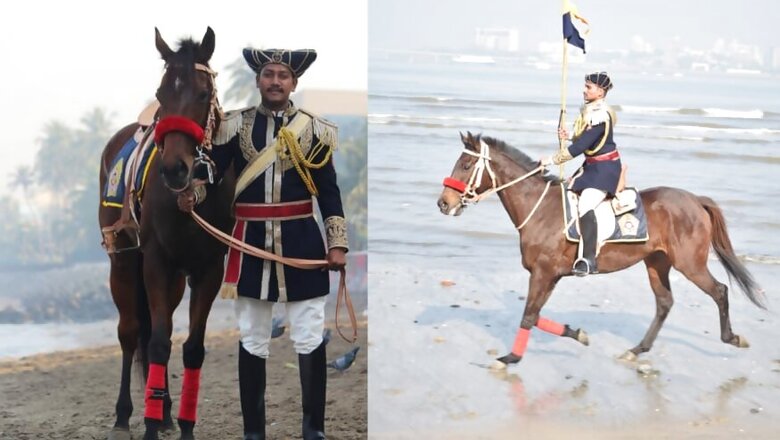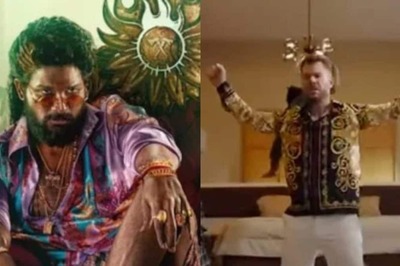
views
Things came a full circle on Republic Day as the Mumbai Police re-inducted its Mounted Police Unit for the first time since Independence and almost a century after it was scrapped.
The 13 horses, including thoroughbreds and Marwaris, and their riders, will be used for crowd and traffic control in Mumbai. The policemen from the unit will wear a uniform designed by Manish Malhotra and sport Maratha-style headgear. There are plans to launch such mounted police units across all police commissionerates and districts.
The police feel horses will able to navigate narrow lanes, which vehicles cannot. The riders will be armed with cameras and be deployed during festivals, protests and at locations where unlawful assembly takes place. The height of these animals will also allow their riders to get a good view of the mob. They can also be used for crowd control at beaches.
Senior officials said this would be on lines of states like Gujarat, Punjab and West Bengal and even the Border Security Force (BSF), which uses horses and camels for patrolling. “Having two policemen on horses has the salutary effect that equals 15 or 20 men on foot. This is psychologically intimidating for the crowd, especially if the police decide to charge at them on their horses,” said a senior official.
Incidentally, during the colonial era, it was these mounted units that helped the police control the unlawful activities of the Pathan community in Mumbai.
As the city evolved from a clutch of marshy islands, the Mumbai Police — originally launched in 1699 as the ‘Bhandari militia' — started using horses for patrolling in the 19th century. They were also used to control the 1857 war of independence in Mumbai.
On June 1, 1922, Sir Patrick Kelly took over as the Commissioner of the Mumbai city police. Kelly, an Irishman, who was an officer in the Imperial Police service, was concerned at the growing number of Pathans in Mumbai.
Originally from regions like Khyber Pakhtunkhwa in pre-Partition India and Afghanistan, these Pathans, who belonged to tribes like Yusufzai, Durrani and Afridi, came to Mumbai, which was fast emerging as a commercial centre in the 19th century.
They worked as menial labour in the docks and textile mills, and were employed as watchmen by the rich. However, many of them got into usurious money-lending and crime. With their intimidating build and gruff tone, common citizens feared the Pathans.
Kelly, who is regarded as the father of the modern city police, managed to deport several Pathans to their homeland. But, Kelly, who set up the ‘Pathan Branch’ to keep an eye on their illegal activities, wanted to restrict them further.
In his book, Mee Mumbaicha Police (I, a policeman from Mumbai), former police official Arvind Pathwardhan has written how Kelly used the around 100-125 strong mounted police force to crackdown on Pathans. Then, the Pathans were concentrated in areas like Shivdi, Kalachowkie and Bhoiwada. Kelly increased night patrolling by these mounted units in areas where the Pathans stayed.
The intimidating sight of a policeman mounted on a horse worked, and the menace of the Pathans soon came into control.
However, soon, there was a feeling that the mounted police had outlived their utility. By then, motor vehicles had started running on the city’s streets, and in 1924, Kelly brought down the number of mounted policemen from 104 to 45 and replaced them with 10 vehicles. The motor transport department of the Mumbai Police was established in the same year.
The 1929 communal riots and subsequent protests during the nationalist struggle made the police realise that the horses and their riders were vulnerable. The rioters would pelt stones at the horses and injure them and sometimes, the horses would go astray. Then, they were used only for controlling peaceful protests, which Kelly felt could be done by policemen on foot too.
Finally, on December 1, 1932, the government accepted Kelly’s proposal to disband the mounted police and replace them with vehicles.
With the Mumbai Police deciding to reintroduce these mounted police, history is indeed coming full circle.
(The writer is a Mumbai-based journalist and author. Views are personal)



















Comments
0 comment